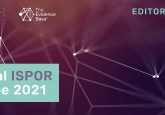Addressing value in rare disease treatment through multi-stakeholder collaboration: insights from the IVI and EveryLife Foundation report

The IVI and EveryLife Foundation for Rare Diseases have released a report titled “Valuing Rare Disease Treatments in Healthcare: Real Experience, Real Impact,” exploring common patient-centered outcomes and highlighting key steps needed to address the challenges in valuing treatments for rare diseases.
Rare diseases affect nearly 30 million people in the United States and are associated with an economic burden of $997 billion per year. Measuring the value and effectiveness of treatments for rare diseases is vital to inform healthcare decisions and ensure equitable patient access to innovative therapies. In a collaborative effort to enhance research and improve care for individuals impacted by rare diseases, the Innovation and Value Initiative (IVI), alongside the EveryLife Foundation for Rare Diseases, has unveiled a report titled “Valuing Rare Disease Treatments in Healthcare: Real Experience, Real Impact.” Part of IVI’s Rare Disease Initiative, this project was made possible through funding support from the Eugene Washington PCORI® Engagement Awards program and contributions from Alexion and AstraZeneca Rare Disease.
The project was overseen by a diverse 15-member steering committee, including patients/caregivers, clinicians, payers, industry experts, and other stakeholders. Three roundtable discussions engaged 46 attendees with the aim to achieve several key objectives, such as identifying expected outcomes significant to rare disease patients and caregivers, promoting communication between payer and patient stakeholders, and reaching a consensus on recommendations for enhancing patient-centered outcomes research (PCOR). In addition, the team conducted a literature review using published literature and rare disease organization websites to gather insights. They also examined patient-centered outcomes through literature reviews and consultations with patients and families. This analysis compared outcomes across 11 rare diseases, revealing commonalities such as physical functioning, fatigue, social relationships, pain, mental health, employment/work, economic impacts, and sleep. Additionally, outcomes specific to each rare disease type were explored, offering insights into diverse patient needs.
Seven key domains on what matters most to patients, caregivers, and other stakeholders in developing approaches to comparative effectiveness research (CER) and assessing value in rare diseases were identified:
- Patient Journey and Time: Considering the patient journey and its evolving impact, including the disease’s natural history, is crucial for prioritizing outcomes in rare diseases.
- Caregiver Journey: Recognizing the vital role caregivers play and understanding their experiences.
- Early and Continuing Engagement and Communication: Emphasizing the importance of early and ongoing patient/caregiver engagement with stakeholders is critically essential to conducting fully patient-centered research and helpful for decision-making.
- Data and Methods: Quality data and diverse methods are vital for assessing value and conducting patient-centered research, particularly for rare diseases. Collaboration enhances data collection, and mixed methods incorporate lived experiences effectively.
- Economic Impacts: Understanding the economic impacts on patients and caregivers aids in designing better plans and strategies to enhance patient experiences and outcomes.
- Scientific Spillover: Exploring the potential for innovative treatments developed for one rare disease to benefit others, maximizing value in the face of limited resources and data.
- Identifying Common Patient-Centered Outcomes for Economic Modeling: Identifying common patient-centered outcomes across rare diseases accelerates cross-cutting research, enhances disease understanding and patient perspectives, and improves CER methods.
On the release of the report, IVI’s Chief Science Officer, Rick Chapman, emphasized the importance of involving individuals with rare diseases in research endeavors to develop more effective treatments tailored to address patients’ needs. He stated:
“This collaboration marks a crucial step forward in improving the lives of millions of people living with rare diseases. By involving people with rare disease at the forefront of research, we can develop more effective treatments that address outcomes that are important to patients, optimize healthcare decisions, and ultimately improve access to innovative therapies for those who need it most.”
Annie Kennedy, Chief of Policy, Advocacy, and Patient Engagement at the EveryLife Foundation for Rare Diseases, underscored the collaborative effort and significance in identifying PCOR and CER focused on values crucial to rare disease patients and caregivers. She highlighted, “we convened experts from varying ecosystems that don’t typically have the opportunity to engage together and yielded critical insights that serve to inform the assessment of patient-centered outcomes for rare diseases and future approaches in PCOR/CER and HTA (health technology assessments).”
The findings from this collaborative effort are anticipated to inform the development of more effective research approaches, leading to improved outcomes for patients and their families. This project underscores the commitment to advancing research methodologies and fostering collaboration across diverse stakeholders in the pursuit of enhanced care for individuals with rare diseases
Want regular updates on the latest real-world evidence news straight to your inbox? Become a member on The Evidence Base® today>>>






